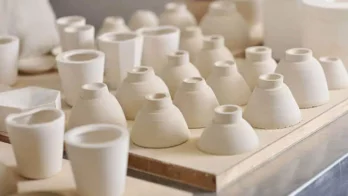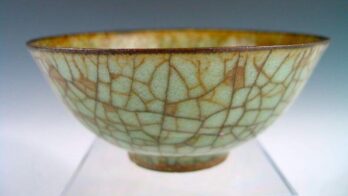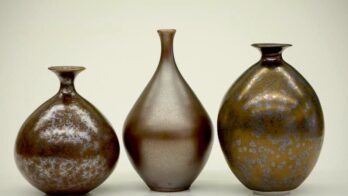There are plenty of important terms and techniques you will learn as you create your own pottery. It can be a lengthy, worthwhile process because the results are timeless. You will probably hear the terms raw glaze, single firing, and more.
Do not let these pottery and ceramic terms overwhelm you because everyone starts from the beginning. The first step is defining these terms, and then you can learn exactly what they mean and how to execute them properly.
What is Raw Glazing?
When we think about glazing, the first thing that typically comes to mind is the process of applying a water-based glaze on greenware after it has been subjected to a bisque firing.
However, raw glazing refers to the application of the glaze on the clay body without a single firing. A water-based glaze is applied to the partially or completely dried clay, which will then dissolve and can then be fired.
Only one firing is required in this technique, which is known as the single-fired process. Many people prefer raw glazing because it gives their pottery a more distinctive look than other traditional firing methods.
Raw Glazing and the Single Fire Process
Glazing your pottery is like gluing it together to form a durable piece. This process is very important, and raw glazing is a very popular method used. There are two methods you can try out when glazing your pieces this way. Both are suitable for creating sturdy pieces and are great to learn. Each will work well for the single-fire process.
Methods of Raw Glazing
Method 1: The first method involves glazing the inside of your greenware pot when it is leather hard. You will only glaze the inside, then glaze the outside when it is bone dry. This truly seals the piece and allows for a long-lasting item that looks great.
Method 2: The second method is a very common technique. It involves glazing the entire piece when it is leather hard. It is simpler because there is less room for errors to occur. Plus, it is one less step than the first method. When glazing this way, beginners tend to find the process a lot easier.
The great part about making your own pottery is deciding which techniques feel right. By trying out both methods of raw glazing, you can be sure to find the one you prefer after a few tries. You might find that your selection changes depending on what you are crafting.
Learning both techniques is great because these are two essential skills to have while working with clay and firing pottery. The more experience you have, the better your outcome will be.
Single Firing Technique
A lot of pottery is fired twice, but with the single-fire process, as it sounds, the piece will only be fired in the kiln once. There are many advantages to using this technique, and it is suitable for all levels of experience.
Advantages of Single Firing


- The most obvious advantage to the single-fire process is that there is less work involved as a whole. When you only need to fire your piece in the kiln once, you can focus on exactly what to do without considering additional steps.
- Your piece will also be ready much quicker because firing more than once often adds days to the process. Most people are very excited to see their finished product, which is one of the pros of single-firing.
- When you only fire your pottery once, you are using less power. This is important regardless of whether you purchase a kiln or rent one. Either way, you will need to consider that firing more than once takes more power.
- This can also cost more money from paying more in electricity for the month or paying for additional rental time in a studio. It is especially great for beginners or those with less experience who want to experiment and learn new skills.
- When you fire your pottery once, you will create a clay-glaze interface. This is important because you will be able to create a solid foundation before you start decorating the item. It simplifies the process of making pottery in a way that makes it much more streamlined.
- You can focus on the before and after a lot easier when fewer steps are involved. Plus, it still allows you to end up with a fantastic result.
Conclusion
With enough practice and education, you can create beautiful pieces of pottery that are sure to wow your loved ones and fill you with a sense of accomplishment. It is a wonderful art form that is suitable for almost everyone.
Learning about the process of how to raw glaze your pieces and how to perform a proper single firing technique will allow you to feel like you have the necessary knowledge to create pottery of your own.



Enter your email below to get our FREE beginner friendly tips.
By entering your email address you agree to receive emails from Potters Passion. We'll respect your privacy and you can unsubscribe at any time.



